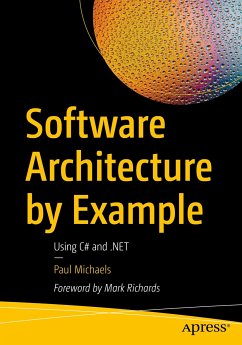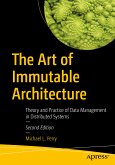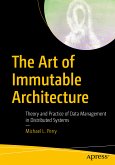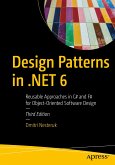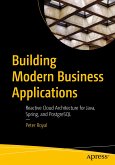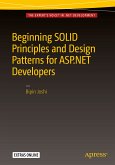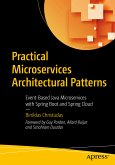Design system solutions using modern architectural patterns and practices. This book discusses methods to keep a system responsive, even when it is being constantly updated, extending a system's functionality without changing the core code, methods of maintaining data history, and designing a distributed transactional system.
After reading this book, you should have a high-level understanding of thearchitectural patterns used in the book, and you should have a methodology for approaching system design.
What You Will Learn
This book will guide you in understanding how a software solution is designed using different architectural processes and scenarios. Each scenario explains if and why a software solution is required to resolve a given issue, and discusses possible architectural approaches to solve the problem. You will learn specific implementations of software architecture for each case along with different approaches to achieve the solutions. Each chapter is structured as a real-world requirement from a client and describes a process to meet that requirement.
After reading this book, you should have a high-level understanding of thearchitectural patterns used in the book, and you should have a methodology for approaching system design.
What You Will Learn
- Understand design principles and considerations for various stages of software development
- Translate patterns into code samples
- Create a blueprint for approaching system design
- Understand architectural patterns: CQRS, event sourcing, distributed systems, distributed transactions, and plug-in architecture
Dieser Download kann aus rechtlichen Gründen nur mit Rechnungsadresse in A, B, BG, CY, CZ, D, DK, EW, E, FIN, F, GR, HR, H, IRL, I, LT, L, LR, M, NL, PL, P, R, S, SLO, SK ausgeliefert werden.
Es gelten unsere Allgemeinen Geschäftsbedingungen: www.buecher.de/agb
Impressum
www.buecher.de ist ein Internetauftritt der buecher.de internetstores GmbH
Geschäftsführung: Monica Sawhney | Roland Kölbl | Günter Hilger
Sitz der Gesellschaft: Batheyer Straße 115 - 117, 58099 Hagen
Postanschrift: Bürgermeister-Wegele-Str. 12, 86167 Augsburg
Amtsgericht Hagen HRB 13257
Steuernummer: 321/5800/1497
USt-IdNr: DE450055826
Bitte wählen Sie Ihr Anliegen aus.
Rechnungen
Retourenschein anfordern
Bestellstatus
Storno

